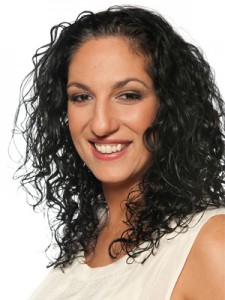After reading Nicholas Kristof and Sheryll WuDunn’s Half the Sky earlier this year, I began to frequent Kristof’s blog at the New York Times website, “On the Ground.” While I found parts of his book lacking in portraying some of the women’s own voices (there are places where women from the developing world are portrayed in the role of the “Other” to a dominant and paternalistic “Western World”), I admired his storytelling ability and emphasis on women’s empowerment. I wanted to read more of his work.
At “On the Ground”, Kristof provides further background on his Times opinion columns and features entries from individuals that are related to subjects he frequently covers: international aid and development, global public health issues, and women’s empowerment. Kristof also engages with his readers through addressing their questions, which range from content-related inquiries to critiques of his writing.
In a blog entry he posted last month, Kristof addresses one of his reader’s criticism regarding his portrayal of Africans as “victims” and westerners as their “saviors” in his writing: Kristof feels that by focusing on a White protagonist as a “bridge,” he receives a larger readership that generates an increased awareness and interest of the developing world (which he feels he would not receive if he were to highlight the stories of individuals who hail from the developing world itself).
Kristof does not, however, ponder what implications the use of the bridge has on his readers’ intellectual psyche—by continuing to use a paternalistic narrative to tell a story, how do readers comprehend their own understanding and relationship with the developing world?
Since February, Sher Bano, a 17-year-old Pakistani girl from Peshawar, has been writing occasionally for “On the Ground.” She studied here in the U.S. last year as a foreign exchange student and currently writes from Pakistan. Her three posts so far have included an introduction to life in Peshawar, arranged marriages, and Pakistan’s Facebook protests; an upcoming post will look at flooding in the area (I was hoping that it would be posted last week; current stories that reveal the impact of the flooding from a Pakistani’s perspective can be difficult to find in the mainstream media).
I was excited to see Sher Bano’s posts (which are, unfortunately, posted on a seemingly sporadic schedule) featured at “On the Ground,” as women and people of color are greatly underrepresented in media. Kristof allows her the opportunity to tell her own story on an ongoing basis. Sher Bano writes about what it is like to be a Pakistani girl in her first post, a universal story of how societal expectations influence how she dresses and chooses her friends:
Being a girl in Peshawar is difficult. There are many “dos and don’ts”. I always wear a shawl at home, cover my head outside the house and hide my face in the more conservative areas, like the villages. If I do not do that, people give me angry and insulting looks, including my parents. The liberal parents here want their daughters to be bold and competitive, but yet know their limits. The limits defined by my parents, for instance, are that I cannot go out alone, should dress modestly (no jeans), interact with boys only when needed and have no male friends, as it is inappropriate in our society. They made some exceptions while I was in Evanston or else it would have been very hard for me to adjust there.
In her second post, she writes about what an arranged marriage in Pakistan entails:
The usual custom is that the boy’s parents ask for the girl’s hand whom they and their son find suitable. If the girl’s family finds the boy as fulfilling all the important considerations for their daughter, such as having a good livelihood etc, they will then ask for their daughter’s opinion. If she agrees, the decision is made. Yet if she vetoes it, it is time to consider someone else for her. Thus the marriage is not imposed in any way.
Her writing is straightforward, her views (she is careful to note) are her own and in no way representative of the entire culture’s. Her stance politically is very pro-United States:
The U.S. must change Pakistanis’ negative perceptions by convincing them that the U.S. supports democracy, not dictatorship; and that the U.S. sees the current crisis as political, not religious. To achieve this, the U.S. must develop a more intimate relationship with Pakistan.
Are Sher Bano’s posts any less captivating to “On the Ground” readers due to the lack of a predominant “White savior” narrative? Do her posts ultimately bring more attention to the region and insight to the cultural nuances that exist?
Bringing more stories from Sher Banos across the world to readers unfamiliar with a minority culture is essential to promote greater cultural familiarity and awareness; it also helps to rectify the absence of women’s viewpoints in large media outlets. Kristof’s decision to highlight the writing of a young Muslim woman is one that deserves applause.














